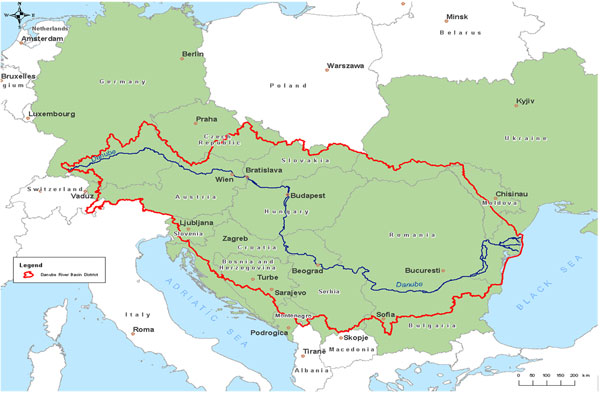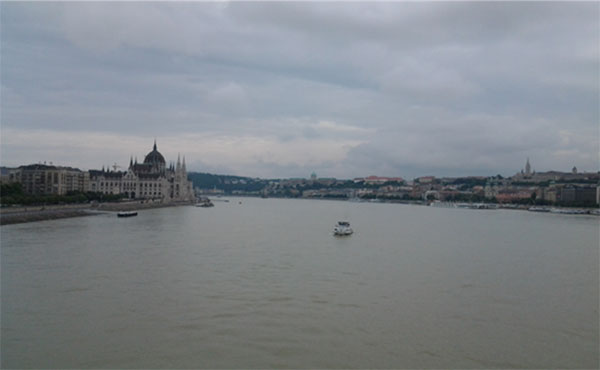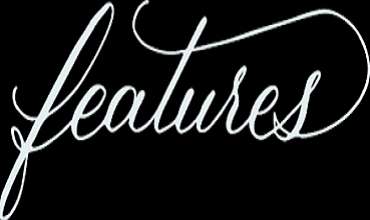The not so beautiful (blue) Danube………
On March 22 - World Water Day, Prof. Mayuri Napagoda looks at how even the most international river in the world is impacted by pollution
It is not the longest river in the world, but it is the river that flows through the highest number of countries and bordering more capital cities than any other river in the world. Its journey starts from Donaueschingen in the Black Forest of Germany and meanders 2,850 km along Central and Southeastern Europe to meet the Romanian coast of the Black Sea. It passes meadows, valleys, forests, scenic landscapes and legendary cities of different nations and greets people with diverse cultures, traditions and languages. It has witnessed the history, heritage and political evolution of various regions of Europe from the days of the first agricultural society that dates back to circa 5500 BC.
Welcome on board to the fascinating journey on the Danube; the most international river in the world!

The Danube river basin
[Source: http://www.icpdr.org/geochemical_maps/?country=DRB]
The Danube (Donau, in German) is the second-longest river in Europe and flows through ten countries; Germany, Austria, Slovakia, Hungary, Croatia, Serbia, Bulgaria, Romania, Moldova, and Ukraine. In addition, its drainage basin includes parts of nine more countries; Bosnia and Herzegovina, the Czech Republic, Slovenia, Montenegro, Switzerland, Italy, Poland, North Macedonia and Albania. The river crosses four capital cities along the way; Vienna in Austria, Bratislava in Slovakia, Budapest in Hungary, and Belgrade in Serbia. Since ancient times, the Danube has been used as a traditional trade route in Europe. The Romans used it as the military frontier at some point. The river also serves as an important source of hydropower and drinking water.
The Danube has about 300 tributaries. Altogether they provide a vital resource for water supply, helping to sustain biodiversity, agriculture, industry, transport and navigation, fishing, recreation, tourism and power generation. The habitats created by the Danube and its tributaries host a unique mix of flora and fauna. Many national parks and nature reserves could be found within the river basin. When the river reaches the Black Sea, a remarkable delta has formed—the “Everglades” of Europe—which is shared by both Romania and Ukraine. The Danube Delta is considered a UNESCO World Heritage Site and a Ramsar Wetlands site.
The beauty of this river inspired many artists in Europe. The famous waltz “An der schönen blauen Donau” (“On the beautiful blue Danube” or in short “The Blue Danube”) by the Austrian composer Johann Strauss II is one of those celebrated pieces of work. This waltz is so popular that a tourist in Vienna would find it being played in every corner of the city, let that be a tour bus, souvenir shop or a restaurant. Science fiction lovers will remember this as the soundtrack of the 1968 film “2001: A Space Odyssey”, a story based on a novel by Sri Lankan citizen Dr. Arthur C. Clarke.
The first few lines of the English translation of the text written by Franz von Gernerth for the melodies of the waltz create a beautiful picture of a giant body of clear blue water calmly flowing through the valleys and fields:
Danube so blue,
so bright and blue,
through vale and field
you flow so calm……
I too wanted to see this river and took a ride on the Danube from Budapest to Bratislava. Oh! the times have changed. The Danube has turned from clear and blue to murky and brown. And I whispered
Danube so brown,
so murky and brown…

Murky and brown: The Danube in Budapest, Hungary
The water is heavily polluted with fertilizers, pesticides and manure, as well as the discharge from smelters, paper mills, chemical plants and tanneries. Despite the efforts of organizations such as the International Commission for the Protection of the Danube River (ICPDR), man-made threats are looming over recent years. The construction of dams, dykes, and canals too have contributed to the irreversible changes to the river profile, water depth and flow velocity, causing a distraction to the aquatic environment.
The pollution issue is not confined to the Danube but is common to very many waterways around the globe. A diverse range of human activities like industrial, agricultural, and transport implies greater risks of pollution of waterways by nutrients and toxins. Water pollution has negative impacts on human health, social and economic activities, ecosystems and aquatic life.
World Water Day is celebrated annually on March 22nd to raise awareness of the importance of clean drinking water and its supply in a sustainable manner. The theme for this year’s celebrations is “Accelerate Change.” We all have a responsibility to conserve water and mitigate water pollution. Simple actions like avoiding the overuse of pesticides and fertilizers, minimal use of bleach and detergents, and proper disposal of garbage and plastics could make a big impact in keeping our waterways clean. This is the time to think about it and act accordingly. So let’s make a change in the way we use, consume and manage water in our lives to preserve the pristine rivers and waterways for the next generations.
(The writer is attached to the University of Ruhuna )
-
Still No Comments Posted.




















Leave Comments